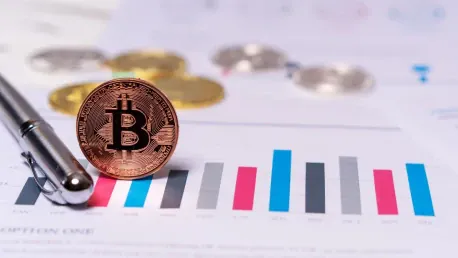Tokenized Real World Assets (RWAs) represent a significant innovation in the financial sector as they merge traditional assets with blockchain technology. Establishing a regulation-compliant marketplace for these assets is crucial for ensuring security, transparency, and adherence to legal standards. This article delves into the steps and requirements necessary for creating such a marketplace, leveraging the Verified Network.
Introduction to the Verified Network
The Verified Network is a decentralized network of regulated financial services providers. These include transfer agents, custodians, asset managers, brokerages, payment institutions, and compliance managers. Each entity plays a vital role in the lifecycle of tokenized securities, from record-keeping and safekeeping of private keys to managing capital and ensuring regulatory compliance.
Role of Financial Service Providers
Transfer agents are tasked with the important responsibility of maintaining accurate records of ownership and transactions, making sure that all transfers are appropriately documented and investors receive their entitlements in a timely manner. On the other hand, custodians are responsible for the safekeeping of both securities and digital assets, providing an additional layer of protection against theft or loss. Asset managers oversee the management of capital, ensuring that investments are handled efficiently and aligned with investor expectations, while brokerages facilitate the trading of these tokenized securities.
Additionally, payment institutions play a crucial role by handling all financial transactions involved in the marketplace, ensuring that processes like dividend distributions and interest payments are executed seamlessly. Lastly, compliance managers constantly work to ensure that the marketplace adheres to regulatory standards, conducting regular audits and monitoring transactions for any signs of illicit activity to maintain the integrity of the platform.
Importance of a Decentralized Network
A decentralized network like the Verified Network offers several advantages that are essential for the operation of a compliant marketplace. By distributing responsibilities across multiple entities, the network significantly enhances security, reducing the risk of a single point of failure that could jeopardize the whole system. Moreover, the use of blockchain technology promotes unparalleled transparency, as all transactions and records are maintained in a public ledger, providing an immutable and auditable trail that can be tracked and verified by any stakeholder.
The decentralized approach also simplifies the process of issuing, distributing, and servicing tokenized securities, making it easier for issuers and investors to participate in the marketplace while ensuring compliance with regulatory standards. This setup not only streamlines processes but also brings trust and confidence to all participants by guaranteeing that every action and transaction meets stringent legal and financial requirements.
Essential Components for an RWA Marketplace
Creating a regulation-compliant marketplace for tokenized RWAs requires several key components. These include transfer agents, paying agents, custodians for both securities and digital assets, and compliance managers. The Verified Network provides the necessary service providers and backend applications to facilitate these roles.
Transfer Agents and Paying Agents
Transfer agents play a crucial role in maintaining accurate records of ownership and transactions, ensuring that all transfers of ownership are properly documented. This meticulous record-keeping is vital for the smooth operation of the marketplace as it confirms that investor entitlements are correctly allocated. On the other hand, paying agents are responsible for managing and distributing payments to investors such as dividends or interest payments. They ensure that all financial transactions are executed accurately and on time, which is essential for maintaining investor confidence in the marketplace.
Paying agents work closely with both issuers and investors to guarantee that every transaction is compliant with relevant financial regulations. This ensures that payments align with investor expectations and legal standards, further solidifying the fairness and reliability of the marketplace. Additionally, their role includes managing the financial logistics of the marketplace, such as processing subscription payments and handling refunds in cases of over-subscription, ensuring a smooth financial flow within the platform.
Custodians and Compliance Managers
Custodians are tasked with the safekeeping of both securities and digital assets, providing a crucial layer of security that protects assets against theft or loss. They employ advanced security measures and protocols to ensure that assets are guarded meticulously. The role of custodians is indispensable as they provide trust in the marketplace’s infrastructure, knowing that all assets handled within the platform are secure.
Compliance managers ensure that all activities in the marketplace adhere to regulatory standards. They conduct regular audits and monitor transactions for any signs of illicit activity, safeguarding the marketplace against fraud and ensuring compliance with all relevant laws and regulations. Their vigilant oversight is crucial for maintaining the marketplace’s integrity, as they identify and address any regulatory or compliance issues promptly.
Leveraging Blockchain and Smart Contracts
Blockchain technology and smart contracts are essential components of a regulation-compliant marketplace for tokenized RWAs. They provide the infrastructure needed to create, trade, and manage security tokens, ensuring transparency and security.
Creating Security Tokens
Security tokens are digital representations of real-world assets, such as stocks, bonds, or real estate. They are created using blockchain smart contracts, which define the terms and conditions of the token, including ownership rights and transfer restrictions. The Verified Software Development Kit (SDK) and Verified Subgraphs are freely available to developers, providing the necessary tools to implement these smart contracts and create security tokens.
Smart contracts automate many processes that traditionally required manual intervention, increasing efficiency and reducing the likelihood of human error. These contracts facilitate a streamlined and secure approach to creating security tokens, ensuring that all terms and conditions are upheld transparently. The use of blockchain technology ensures that once issued, each token transaction is recorded on an immutable ledger, offering unparalleled transparency and security to all participants in the marketplace.
Trading and Managing Security Tokens
Once security tokens are created, they can be traded on the marketplace, providing liquidity to the ecosystem. Liquidity pools play a crucial role in facilitating trading by ensuring that buyers and sellers can easily exchange tokens, thus maintaining a vibrant and active market. These pools underpin the smooth operation of the marketplace by ensuring that there is constant liquidity available, making it easier for participants to trade tokens seamlessly.
In addition to trading, investors need robust portfolio management tools to oversee their investments. These tools allow investors to view their profits and losses, track asset performance, and manage their investment portfolios efficiently. The Verified subgraphs assist in querying this data, providing the necessary information for making informed investment decisions. By integrating these tools, investors gain comprehensive insights into their holdings, enhancing their ability to optimize their investment strategies effectively.
Ensuring KYC and AMLA Compliance
Compliance with Know Your Customer (KYC) and Anti-money Laundering (AMLA) regulations is crucial for maintaining the integrity of the marketplace. These procedures help prevent illicit activities and ensure that all participants are legitimate and compliant with relevant laws.
Conducting KYC Checks
KYC checks involve verifying the identity of investors and ensuring that they meet the necessary criteria to participate in the marketplace. This includes collecting and verifying personal information such as name, address, and identification documents. Once an investor’s identity is verified, their wallet is whitelisted, allowing them to participate in the marketplace. These steps are essential for maintaining a secure and compliant trading environment.
Conducting thorough KYC checks helps to establish trust among marketplace participants. By verifying the identities of all investors, the platform can ensure that only eligible and verified individuals are allowed to trade. This process prevents unauthorized access and reduces the risk of fraud, enhancing the overall security of the marketplace. Moreover, it ensures compliance with regulatory standards, protecting the marketplace from potential legal issues and maintaining its integrity.
Monitoring for AMLA Compliance
AMLA compliance involves vigilant monitoring of transactions for any signs of illicit activity, such as money laundering or terrorist financing. This requires regular audits and the use of advanced software applications that monitor transactions in real-time, flagging any suspicious activities. Prompt investigation of flagged activities ensures that the marketplace remains compliant with all relevant laws and regulations, maintaining its reputation and trustworthiness.
By implementing robust AMLA monitoring, the marketplace can effectively prevent and address potential illegal activities, safeguarding its operations and protecting investors’ interests. This continuous oversight is crucial for ensuring that all transactions are transparent and legitimate, upholding the marketplace’s commitment to regulatory compliance and ethical trading standards.
Issuing and Trading Security Tokens
Marketplaces for tokenized RWAs allow issuers to request the issuance of security tokens, both for new capital raising (primary issues) and for secondary trading of existing securities. The process of issuing and trading security tokens involves multiple steps to ensure compliance and transparency in every transaction.
Issuing Security Tokens for New Capital Raising
When issuers need to raise new capital, they can request the issuance of security tokens representing the new investment opportunities. The process involves providing detailed information about the securities, such as the name, symbol, cash token pairing, type of investors, country of issuance, and relevant business and financial details. This information is used to create security tokens through smart contracts, ensuring that all terms and conditions are clearly defined.
Issuers must adhere to regulatory requirements during the token issuance process, ensuring that all information provided is accurate and complete. Once the security tokens are created, they can be offered to investors through the marketplace. This process allows issuers to reach a wider audience of potential investors, facilitating efficient capital raising while ensuring compliance with all relevant regulations.
Trading Existing Securities through Secondary Markets
In addition to issuing new security tokens, the marketplace also facilitates the trading of existing securities through secondary markets. This allows investors to buy and sell tokenized assets, providing liquidity and flexibility in managing their portfolios. The process of secondary trading involves careful documentation and compliance checks to ensure that all transactions are legitimate and transparent.
Marketplaces must implement stringent controls to oversee secondary trading activities, including real-time monitoring of trades and regular audits. These measures help prevent market manipulation and ensure that all trades comply with regulatory standards. By providing a secure and compliant platform for secondary trading, the marketplace enhances investor confidence and promotes a healthy trading ecosystem.
Conclusion
Tokenized Real World Assets (RWAs) symbolize a major advancement in the financial industry by integrating traditional assets with blockchain technology. The creation of a regulation-compliant marketplace for these assets is vital to guarantee security, transparency, and adherence to legal norms. This article explores the crucial steps and demands of establishing such a marketplace, emphasizing the utility of the Verified Network.
A regulation-compliant marketplace ensures that all transactions meet legal requirements, providing investors with the confidence that their investments are safe and secure. Transparency is another essential factor, as it allows all participants to see the history and ownership of the assets, thereby reducing the risk of fraud. By utilizing blockchain technology, the Verified Network offers a decentralized and immutable ledger, ensuring that all transactions are recorded accurately and cannot be tampered with. This blend of traditional assets and cutting-edge technology could revolutionize the financial industry, making investing more accessible and secure for everyone involved.









